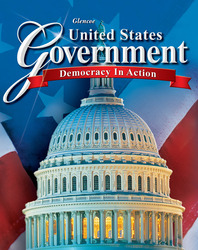United States Government: Democracy in ActionChapter 24:
Local GovernmentsStudent Web Activity Lesson PlansIntroduction
Providing education is one of the most important functions of local governments, and local school districts make the key decisions on public school policy. Relying on local funding results in inequality of education across many districts in a state. Even after adding state funds for public education, the level of per student spending differs widely among the states. In this activity, students will compare the amounts spent per student for various states. Lesson Description
Students will read a Census Bureau press release about average expenditures per student, and answer four questions. Students will then research average per student spending in their state, as well as differing amounts spent across school districts within their state. Instructional Objectives
- Learners will identify the average amount spent per student in the nation.
- Learners will specify percentages spent by state and local governments and the federal government per pupil.
- Learners will research their own state's average per pupil spending and specific amounts spent in various school districts across the state.
|
Student Web Activity Answers
- School districts in the United States spent an average of $9,138 per student in fiscal year 2006.
- There are more than 15,000 public school districts.
- State governments contributed the greatest share of funding to public school systems (47 percent), followed by local sources (44 percent) and the federal government (9 percent).
- New York ($14,884), New Jersey ($14,630) and the District of Columbia ($13,446)
- Answers will vary. Students should find the average amount spent per student for the current fiscal year in your state, and how this amount varies across school districts. Many state governments struggle to equalize per pupil expenses.
|
 | 




